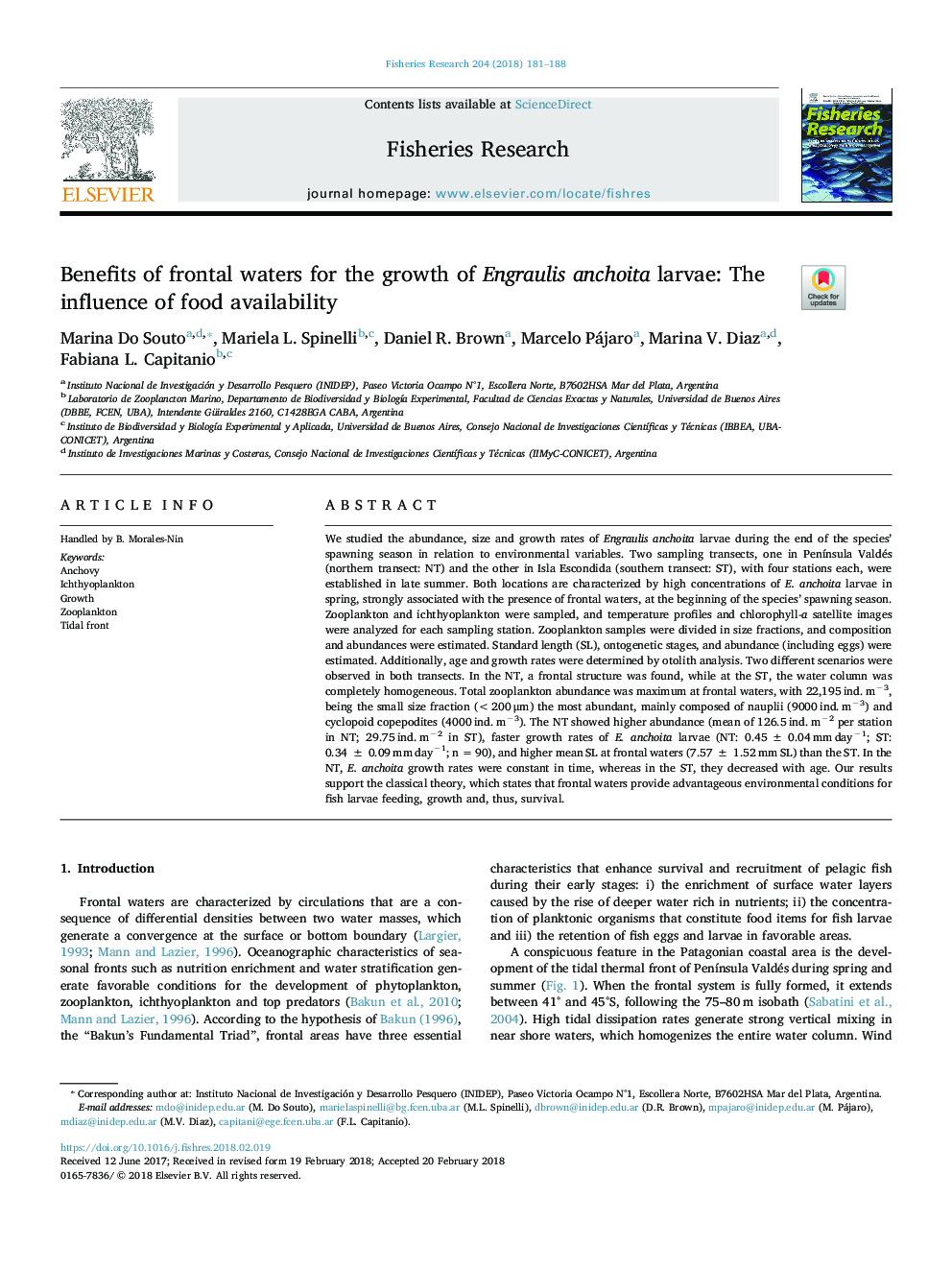| کد مقاله | کد نشریه | سال انتشار | مقاله انگلیسی | نسخه تمام متن |
|---|---|---|---|---|
| 8885378 | 1626766 | 2018 | 8 صفحه PDF | دانلود رایگان |
عنوان انگلیسی مقاله ISI
Benefits of frontal waters for the growth of Engraulis anchoita larvae: The influence of food availability
دانلود مقاله + سفارش ترجمه
دانلود مقاله ISI انگلیسی
رایگان برای ایرانیان
کلمات کلیدی
موضوعات مرتبط
علوم زیستی و بیوفناوری
علوم کشاورزی و بیولوژیک
علوم آبزیان
پیش نمایش صفحه اول مقاله

چکیده انگلیسی
We studied the abundance, size and growth rates of Engraulis anchoita larvae during the end of the species' spawning season in relation to environmental variables. Two sampling transects, one in PenÃnsula Valdés (northern transect: NT) and the other in Isla Escondida (southern transect: ST), with four stations each, were established in late summer. Both locations are characterized by high concentrations of E. anchoita larvae in spring, strongly associated with the presence of frontal waters, at the beginning of the species' spawning season. Zooplankton and ichthyoplankton were sampled, and temperature profiles and chlorophyll-a satellite images were analyzed for each sampling station. Zooplankton samples were divided in size fractions, and composition and abundances were estimated. Standard length (SL), ontogenetic stages, and abundance (including eggs) were estimated. Additionally, age and growth rates were determined by otolith analysis. Two different scenarios were observed in both transects. In the NT, a frontal structure was found, while at the ST, the water column was completely homogeneous. Total zooplankton abundance was maximum at frontal waters, with 22,195â¯ind.â¯mâ3, being the small size fraction (<200â¯Î¼m) the most abundant, mainly composed of nauplii (9000â¯ind.â¯mâ3) and cyclopoid copepodites (4000â¯ind.â¯mâ3). The NT showed higher abundance (mean of 126.5â¯ind.â¯mâ2 per station in NT; 29.75â¯ind.â¯mâ2 in ST), faster growth rates of E. anchoita larvae (NT: 0.45â¯Â±â¯0.04â¯mmâ¯dayâ1; ST: 0.34â¯Â±â¯0.09â¯mmâ¯dayâ1; nâ¯=â¯90), and higher mean SL at frontal waters (7.57â¯Â±â¯1.52â¯mm SL) than the ST. In the NT, E. anchoita growth rates were constant in time, whereas in the ST, they decreased with age. Our results support the classical theory, which states that frontal waters provide advantageous environmental conditions for fish larvae feeding, growth and, thus, survival.
ناشر
Database: Elsevier - ScienceDirect (ساینس دایرکت)
Journal: Fisheries Research - Volume 204, August 2018, Pages 181-188
Journal: Fisheries Research - Volume 204, August 2018, Pages 181-188
نویسندگان
Marina Do Souto, Mariela L. Spinelli, Daniel R. Brown, Marcelo Pájaro, Marina V. Diaz, Fabiana L. Capitanio,